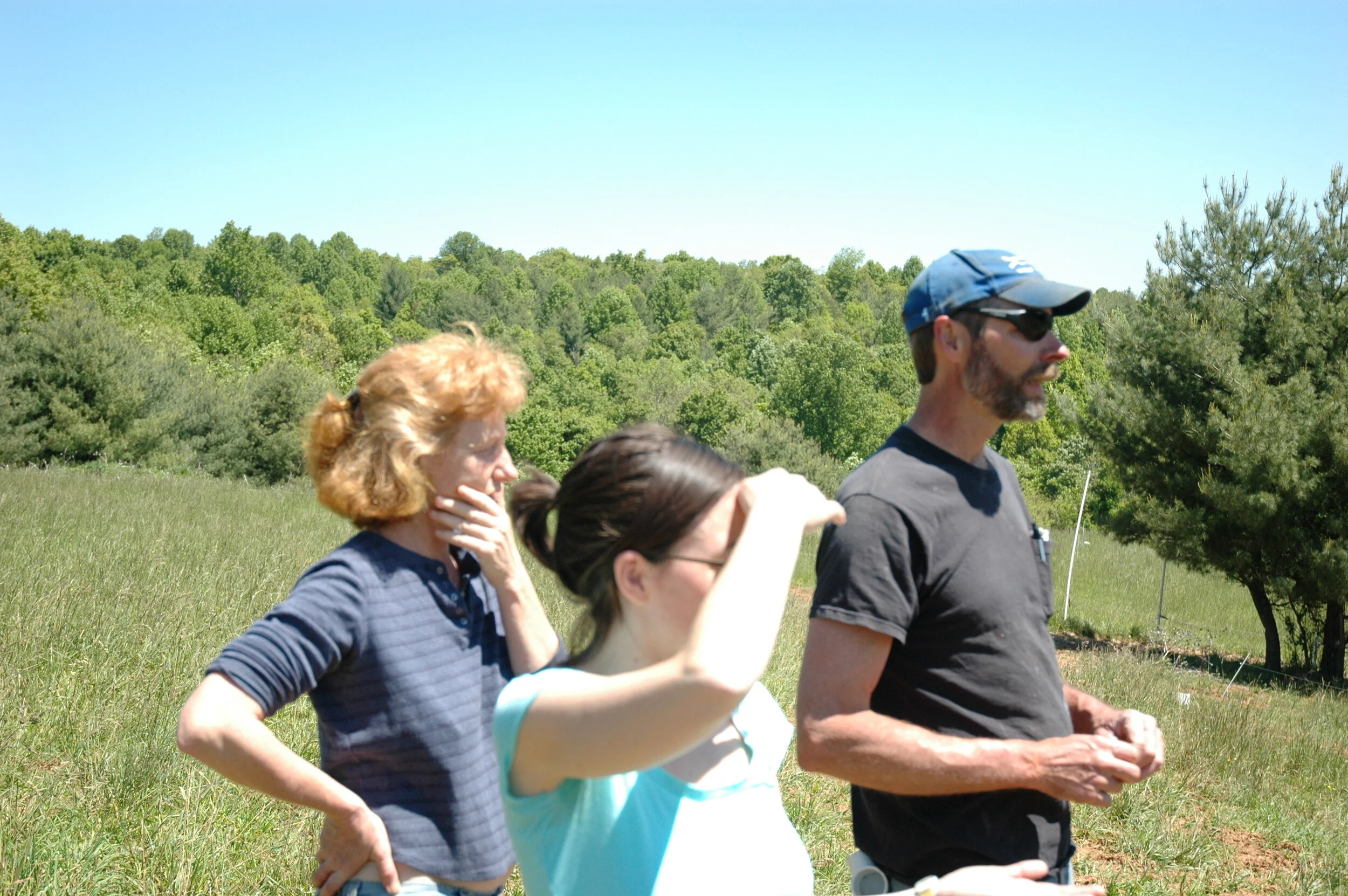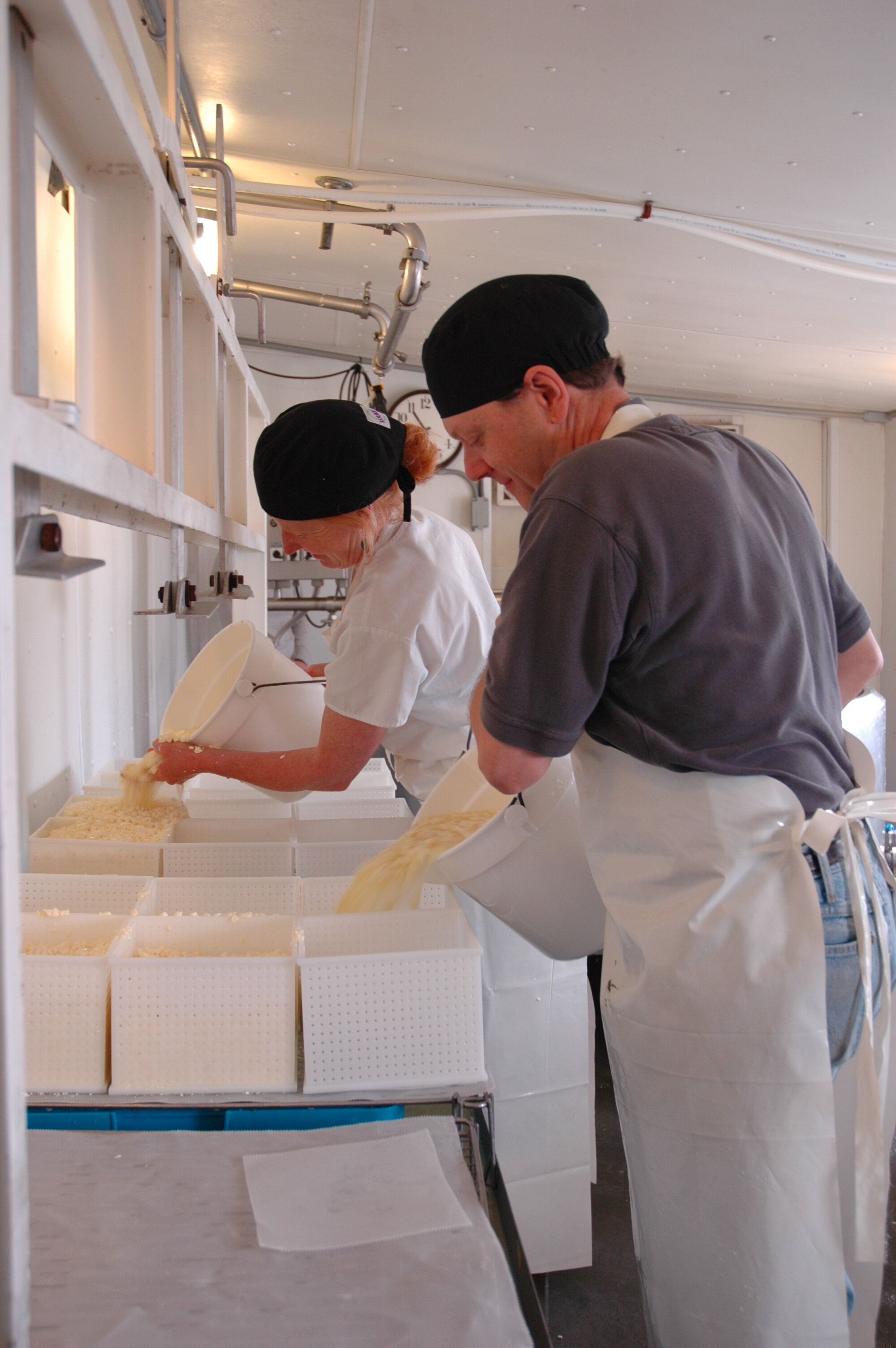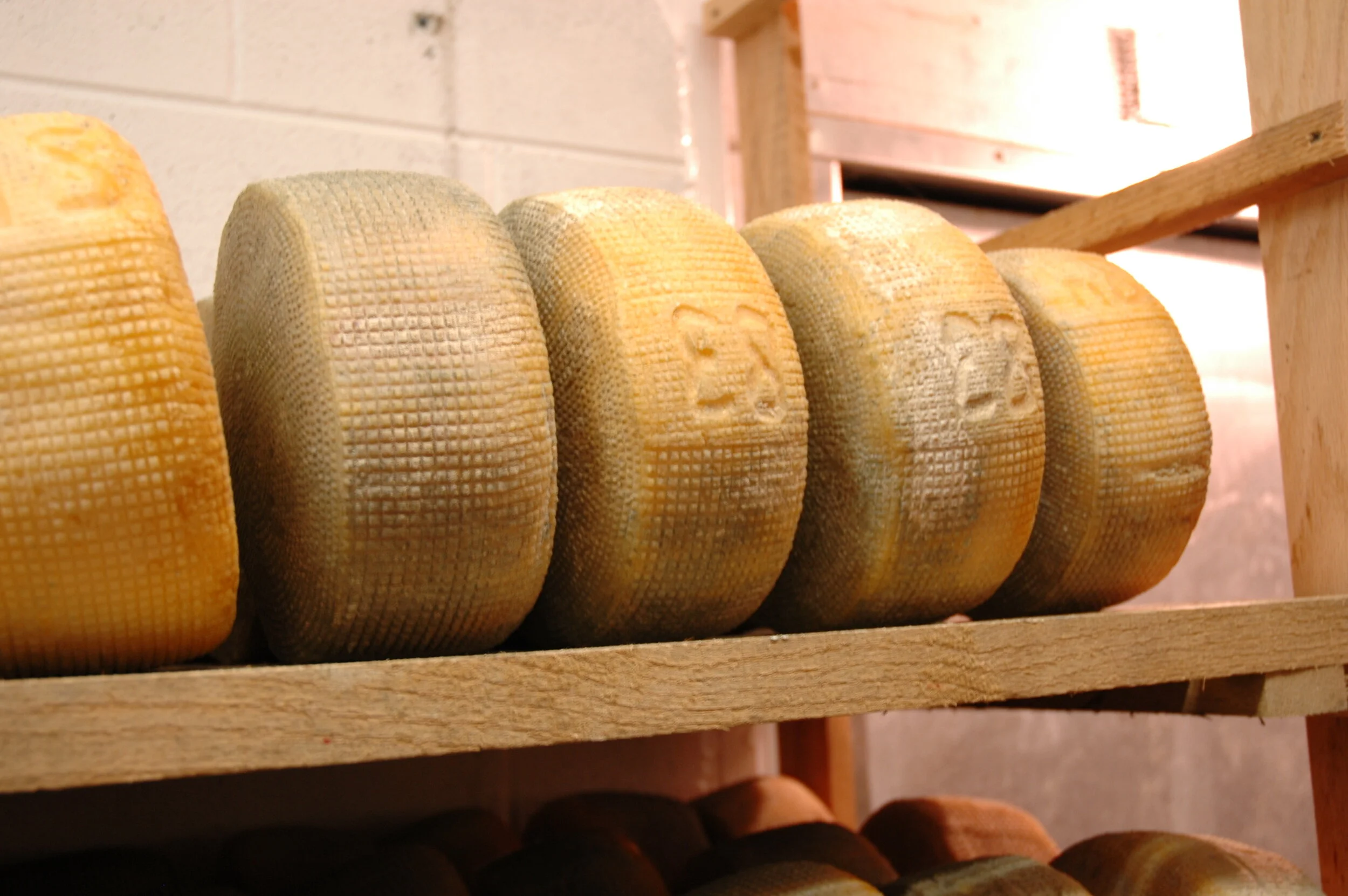Meadow Creek Dairy: Virginia
June 2006
Name: Meadow Creek Dairy
Owners: Helen & Rick Feete Location: Galax, Virginia
Animals: Over 100 Jersey with some crosses mixed in
Cheeses/Products: Grayson, Mountaineer, Appalachian
In the 80’s Helen and Rick Feete went into dairying because as they saw it the profession was stable and they would get to spend more time with each other and with their children than if they worked other kinds of jobs. Both of them worked at conventional confinement dairies. In 1988, when they decided to get cows and started their own dairy, they reacted against conventional dairy farming. This was primarily because of the cost of running a confinement dairy; they did not have the capital to invest in the equipment or the ongoing purchase of corn silage to feed the animals. Around this time they saw an article in Farm Magazine about methods used in New Zealand dairies- grass-fed, rotational grazing- and also a book by Bill Murphy, Greener Pasture is on Your Side of the Fence, came out and they could see a style of dairy that they could afford. As a result, Meadow Creek Dairy- along with a handful of other New Zealand style rotational grazing setups in North America- stood out like a sore thumb in the world of cows milk dairies. The cows are outside on grass 365 days of the year and there are few structures and not so much heavy equipment around to support the dairy.
Six years into their own dairy business, without any non-family employees and not a single milking off, they began to wear out. So they considered their options and decided to try changing over to being a seasonal operation meaning they would breed their herd within one window. Any cows that do not get pregnant within that window must be cut from the herd. Not an easy decision to stick with, not to mention arranging your finances to get you prepared for the dry season- no milk production means no cash flow. Although this was a difficult decision to carry out, it also breathed new life into the farm...and we should all be thankful for this change as it gave the Feetes a chance to build a small cheese plant so that Helen could begin to take some of the grass-fed, raw Jersey milk from a few cows and turn it into cheese.
When we pulled into Meadow Creek Dairy Rick was just finishing up milking with Judith, one of their milk hands. Helen, Michael, and I trailed behind one of the last groups of cows milked out to the paddock they would graze that evening. The farm is beautiful with hills that may qualify as slightly more intense than rolling, a creek, a couple of ponds, and copious amounts of luscious green grass. We wandered out amidst the milkers (approximately 89 of them at the moment) who are almost all mostly Jersey with a few carefully selected breeds crossed into the herd. As with all other factors that impact the farm, Helen and Rick are constantly tweaking their breeding to improve the overall genetics of the herd. They are definitely doing something right as this past season they had 89 successful births (no dead calves or cows).
On our first night, Helen treated us to one of the chickens raised on their farm and spring lettuces from her garden. We got up in the morning and wandered up the path to the cheese plant where Helen had been busy for some time setting up the room for making Grayson, their raw milk Taleggio style cheese.
The make works best with four people and Helen had set up the crew to come in special on Saturday so that we could see them do it. Dixie was the first to show up (with homemade cinnamon rolls and butter and strawberry ice cream made from Meadow Creek cream), he has worked there for about 8 years. Then Helen and Rick’s daughter Kate arrived with her fiance Dan, they both work for Meadow Creek. We stepped in to watch Helen cut the curd and then cleared the room for a few minutes to allow them to set up all of the forms. Once they were ready to hoop the cheese we were directed to two spots where we could stand without being in their way. Kate stirred the curd gently and constantly to prevent it from adhering to itself, Dan scooped curd into buckets, Helen and Dixie ferried the buckets from the vat to the molds around the room. At a certain point, Helen stopped pouring curd and began flipping the cheeses that were hooped first. As luck would have it, we got to see the biggest Grayson make they have ever done- it was awesome to see a cheese make that involved so many people moving a lot of curd and having such a good time together.
Those cheeses were flipped at various intervals that day and eventually we helped Helen move them into the cellar. Helen is patiently waiting while the finishing touches are being done on a new cheesemaking room and in-ground cellar- an excellent excuse for us to go visit them again later this year.
The following morning they took us on a walk around their property. One could easily wander around on their farm and overlook one of the most important features- what is growing on the land. While we walked, Rick explained how one cares for a pasture when they are focused on long-term sustainability (environmental, economic, and social). When you kneel down and look at the variety of grasses available to the cows it is intense to think about the amount of work required to create this landscape (without the use of chemicals). He also talked to us about something other farmers have mentioned, the concept of a nutrient loop on a piece of land- I will do my best to give an explanation although it will be oversimplified. The cows go out and eat the grass which has grown from nutrients in the soil, they metabolize that grass and put it back onto the land via manure. One of the wonderful thing about grass based dairying is that you are closer to closing the loop because you are not taking hay from someone else’s land and moving those nutrients onto your own land... over time this depletes the hay farmer’s land.
Listening to Helen and Rick talk about their path through the dairying industry it is apparent that they are steady visionaries with the patience required to do something the right way. They are humble about what they have accomplished and yet they would never undersell the complexity of what they do- which is exactly as it should be.






